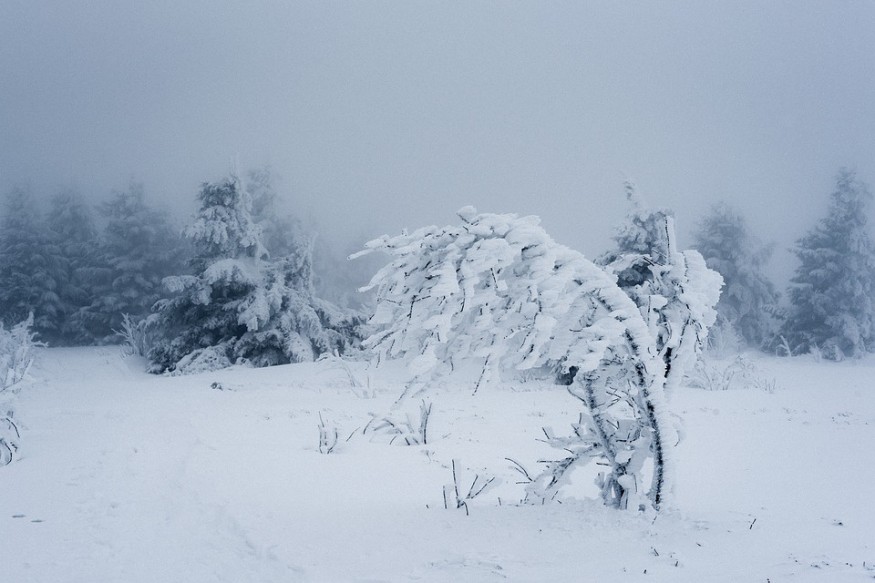Parts of Siberia have been experiencing some of the coldest air on the planet in recent days, resulting in bone-chilling temperatures. Despite having the coldest temperatures in over eight years, "zombie fire" continued to rage beneath the frozen terrain.

Drop in Temperature
In Delyankir, Russia, the temperature dropped to an unholy 75 degrees below zero Fahrenheit (59.2 degrees below zero Celsius) on Tuesday evening, the lowest temperature there since January 2014. Last winter, the temperature dropped to 73 degrees below zero Fahrenheit (58.3 degrees below zero Celsius) on Jan. 18.
Delyankir is roughly 300 miles (483 kilometers) north of the Sea of Oshkosh in distant eastern Russia.
Extreme cold is a feature of the area. Oymyakon, about 90 miles (145 kilometers) southwest of Delyankir, is billed as the world's coldest permanently inhabited settlement, with a record low of 90 degrees below zero Fahrenheit (67.8 degrees below zero Celsius) set in 1933.
On Tuesday evening, local time, the temperature in Oymyakon plummeted to - 72 degrees Fahrenheit (minus 57.7 degrees Celsius), a devastating low but only one degree above the record low set in January.
According to The Siberian Times, it was chilly enough for local schools to close late last week. When the temperature drops below minus 63 degrees Fahrenheit (minus 53 degrees Celsius), children under the age of 11 must stay at home. All pupils must attend class if the weather is "milder" than 63 degrees below zero. All in-person classes are canceled when the temperature drops below negative 65 degrees Fahrenheit (minus 55 degrees Celsius).
Zombie Fires
The intense cold may have forced some students in the region to miss school, but it had a stricter difficulty putting out some of Nature's most ferocious flames, which have raged on despite the terrible weather. Peat fires, commonly called "zombie fires," can last months or even years. Last week, while the flames continued to burn underground, video acquired by The Siberian Times and released on Twitter showed smoke rising from the depths of a snowy landscape.
Zombie fires burn at -60C outside Oymyakon, the world’s coldest permanently inhabited place. Local photographer captures pillars of smoke rising above the underground peat fire https://t.co/71IjPxc49c pic.twitter.com/o8CTLO0nPE
— The Siberian Times (@siberian_times) December 2, 2021
"I [saw] them amid meadows near Khara Tumul hamlet, not far from Oymyakon," local photographer Semyon Sivtsev told The Siberian Times. "It was in the summertime, and there were flames in the region."
"I know of at least one zombie peat fire in the Mundullakh area, not far from Oymyakon, that has been burning for several years," Sivtsev added. According to Sivtsev, snowmelt and intense rainfall eventually put out the fire.
Peat Fires

Peat fires smolder under ice and snow during the winter and emerge in the spring. Peat is a layer of soil that frequently consists primarily of decaying plant material. Since peatlands are carbon-rich, the fires that it feeds may release significant amounts of carbon dioxide into the sky.
The Siberian Times reported that the wildfire season in Yakutia, Russia's biggest territory and home to Oymyakon, was one of the worst on record for the region, with roughly 31,000 square miles (8 million hectares) scorched. These flames can ignite peat, which can smolder for years, even under snow and ice, even in the coldest parts of the earth.
According to AccuWeather Senior Meteorologist Jim Andrews, the harsh winter environment of far northeastern Asia is also known as the "Pole of Cold."
"In northern Asia, the Siberian 'Pole of Cold' is located within the Sakha Republic, or Yakutia," Andrews explained. "Only the peaks of vast Antarctica and Greenland ice sheets are colder in the winter than it is in the summer."
High temperatures of 40 to 50 degrees below zero Fahrenheit (40 to 50 degrees below zero Celsius) are typical in Delyankir from the middle of November until the middle of February. During this period, the average low temperature is minus 60s Fahrenheit (51 below zero to 56 below zero C).
Current Situations
Yakutsk witnessed one of the longest stretches of temperatures below minus 40 F (minus 40 C) in at least 14 years during a record cold spell last winter. Yakutsk, located roughly 500 miles (825 kilometers) southwest of Delyankir, is also in eastern Russia.
The region is prone to freezing temperatures throughout the winter due to widespread snow cover, a lack of heating due to a low sun angle, and the lack of adjacent significant bodies of water.
Big bodies of water tend to hold heat better than land. Therefore areas adjacent to large amounts of water are milder than those that are landlocked and distant from a body of water.
This frigid storm arrives just six months after the region saw record temperatures. Temperatures in Oymyakon reached 88.8 degrees Fahrenheit (31.6 degrees Celsius) in late June, the warmest June temperature on record.
While temperatures in the region seldom stay above freezing for more than a few days to a week at a time, it is doubtful that the area will experience a substantial shift to warmer weather anytime soon.
© 2025 NatureWorldNews.com All rights reserved. Do not reproduce without permission.





